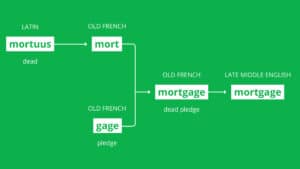I’m going to share three financing strategies for property traders. If you’re looking to renovate and flip, this is the one for you. What is property trading? Simply put, it is buying a property undervalued, and then selling it for a higher price for profit.
It’s a very good strategy if you’re trying to build up your equity position. Or if you have run out of servicing and capacity at the banks, and you’ve got a bit of equity lying around, it’s a good strategy for that situation as well.
Mortgage brokers like us can access second-tier lenders for you, who will lend you money without looking at servicing capacity, and just purely on the equity position. So, by property trading, you can still build up more equity to pay down your debt position and try and free up that servicing capacity again.
I’m also going to share with you who I would recommend as a property trader mentor. So, here are the three financing strategies. We’re going to split them into three categories, low deposit, medium size equity position, and high equity position. You can access information via online mortgage calculators to help clarify your position. Or you could request a free borrowing summary which includes a Core Logic Bank Level Property Valuation.
Strategy one: Joint Ventures for a Low Equity Position.
If you’re in a low equity position, then you could potentially do a joint venture. What that basically means is you gather a few people and you put together $50,000 or $100,000 each, and then you go buy a property with a 30% deposit. Now, by having a 30% deposit on a $600,000 or $700,000 property, you can access the second-tier lenders.
Second-tier lenders are asset lenders, meaning they don’t actually look at your servicing capacity. They focus on the value of the asset. It’s a lot simpler and easier to do joint borrowing with an asset lender. They usually lend you the money for 6 to 12 months. And the thing that they’re looking for is a clear exit strategy.
By exit strategy, we mean being able to answer this question, “What exactly are you doing with the property?”. A suitable answer could be “we’re going to sell it within six months after the renovations.”
Now, it does come at a higher cost as well. So, second-tier lenders for this type of deal are anywhere between that 7% to 10%, interest rate range, and usually, they charge a financing fee. So, it’s very important if you’re trading with a second-tier lender, you’re looking for deals that have a very high margin to make sure you can cover the financing costs, renovations costs, and agent’s fees when you sell the property.
Strategy two: Revolving Credit for a Mid Equity Position.
If you have a bit more equity, and perhaps you have a couple of friends that want to do it as well, you can actually ask a non-bank lender for a revolving credit facility.
250K, 350K is quite normal. And so, you could potentially go 50-50 or thirds and buy a property outright. This way the funding’s a lot cheaper because non-bank funding is usually starting at the 3% mark and sometimes up to around 5% – 5.5%.
Now, the thing to note here is that you’re buying the property outright with 100% finance, using the two (or three) revolving credits that you guys have, and use that funding there. And you’re not giving the new property as a security to the bank. Because once you tell the bank that you’re going to be trading that property and you’re trying to borrow money on it, they’re not going to give you that low-interest rate that is available with non-bank lenders.
And if you tell the main bank, you’re going to flip, they don’t want to hear about it because they don’t make much money off a flip. They charge a very low-interest rate. And if it’s only for short term, it does not fit with their policy.
Strategy three: 100% finance for a High Equity Position.
If you have lots of equity in your property, or you have a freehold security, then you can actually buy a property with 100% finance outright. As Auckland Mortgage Advisers we see this situation a lot with clients who have held on to one property for a number of years.
And in that situation, you want to just use the equity in your property, and not give the new property that you’re about to trade as security. So, once you’ve done your renovations and you sell that, then you can put the money back in your mortgage, and you got to make sure it’s an offset loan. So, now that money is ready to go for the next trade.
And so, once you’re in that situation where you have a big deposit available in your revolving credit or offset loan, then you could actually have multiple trades going at the same time. You can sit on multiple properties with second-tier lenders. Now, alternatively, if you run out of service and capacity and you have a freehold security, you can just give that security to a second-tier lender.
They will then give you 100% financing for the new property. And you’ll just be able to renovate, sell, build up a bit more equity to pay back your existing loan to free up more service capacity. And there you have it, folks. Those are three strategies you can use for property trading.
As promised, the one property trading mentor that I will recommend is AssetLab. I have known Phil, Sally and Arn, for a while in the industry. They are very genuine people, and very passionate to teach people about property. So, if you’re looking to trade, then I would 100% recommend the AssetLab course. And of course, if you want to learn more about mortgage strategies, check out our masterclasses.













